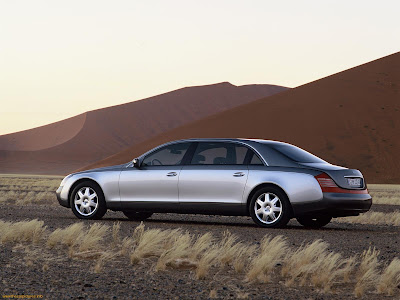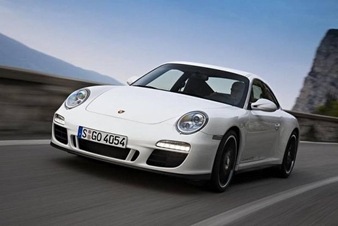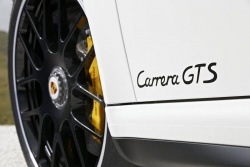Porsche 911 Carrera S Cabriolet (2013)
With an eye to narrowing the performance gap between the Porsche 911 Carrera S and the race-inspired Porsche 911 GT3, our German friends, in typical Porsche fashion, have offered up a superb compromise in the new 2011 911 Carrera GTS.
Exceptional vehicle dynamics combined with 3.8-litre flat six-cylinder engine producing an impressive 408 hp (23 more hp than the 911 Carrera S) make this latest offering from Porsche a perfect blend of performance and style. Available as both a coupe and cabriolet, the Porsche 911 GTS offers up a top speed of 306 km/h and a thrilling “ride” for anyone lucky enough to slip behind the wheel.Ironically, the car consumes no more fuel than the Carrera S thanks to the Porsche Intelligent Performance development philosophy. Consumption of fuel is pegged at 10.6 litres/100 km (combined city/hwy), which is very respectable and appreciated (in a time of rising fuel costs) for a vehicle with this much power and the ability to cover zero to 100 km/h in only 4.6 seconds. All this power is transferred to the asphalt via 305/35R/19-inch rear tires.
Visually, the GTS stands out from other 911 models thanks, in large part, to the 19-inch RS Spyder centre-mount wheels, painted in black and sporting polished lips. To further distinguish the GTS from its siblings, it has been outfitted with a SportDesign front apron, also in black, with spoiler edge and unique black side skirts.
Additionally, either black or silver GTS badging, depending on body colour, are affixed to the doors and rear lid.
Our test vehicle’s body colour was white and while I am not a big fan of white sports cars, the 911 GTS looked magnificent, perhaps in part due to the large 19 inch black RS Spyder wheels and the high-performance brake calipers,painted in red (or yellow, as in the Porsche-supplied photos), peering through the spokes of the wheels – all in all, a very sexy and visually-stunning balance of colour.
The brake system in the 911 GTS consists of four-piston aluminum monobloc calipers on the front and rear axles with perforated and ventilated brake discs. As an option, one can choose to upgrade to a Porsche Ceramic Composite Brake (PCCB) system, with ceramic discs and six-piston monobloc calipers on the front and sporting four-piston calipers on the rear.
The GTS is most definitely a driver’s car, as they say. You simply want to be behind the wheel as often as possible and for whatever mundane errand you may have (or wish) to run. I think you get the point!
The seat surfaces, new three-spoke steering wheel (unique to the GTS), shifter and handbrake lever are all covered in a high quality “Alcantara” material which offers a suede-like texture. Porsche ensured that any part of the driver coming in contact with the vehicle be met with this luxurious sensation.
A word to the wise – if you are the type that prefers anonymity, this is not the car to arrive at your best friend’s wedding in. It will literally steal the show. If not visually, then the burble resonating from the sport exhaust note, enhanced with the push of a button, will surely announce your arrival. The 911 Carrera GTS has a unique sound, and it, combined with a distinctive black surface design between the quad pipes is nothing short of stunning.
As with many test vehicles, you wish to put them through the paces to feel how well they drive and handle on various road surfaces and in various driving conditions. With a car like the 911 GTS, one is instantly drawn to curvy country back roads and perhaps a short jaunt to your favourite out-of-town restaurant or watering hole, providing both city and highway driving experiences.
Equipped with the Porsche Active Suspension Management (PASM) system, the characteristics of each individual shock absorber are optimally adapted for various driving conditions.
One can choose between both normal and sport modes. As one might expect, the normal mode works just fine for city and highway driving while the sport mode might best be engaged for those curvy country roads and of course if heading to the track for some weekend lapping runs.
After two days’ worth of city driving it was time to head out of town to one of my favourite cafes, located in Kingston, Ontario. Upon heading out onto the highway one is instantly taken by how fast the GTS gets up to speed. As a matter of fact, it is a challenge to keep it at a reasonable speed as the faster one travels, the more stable the car truly is.
As Porsche states, the Carrera 911 GTS is the sportiest Carrera in its line-up and offers a combination of enhanced engine and rear-wheel drive capability in combination with a wide-body (44 mm increase in width at the rear) targeted towards providing an ultra pure driving experience.
On the highway commute to Kingston, the 911 GTS performed flawlessly as it traveled down Ontario’s Highway 401, collecting numerous “thumbs ups” from both young and old alike. Without a doubt, this vehicle possesses “eyeball” for both automotive and non-automotive enthusiasts. I could not help but wonder why exactly this might be.
Perhaps it was the new front apron, painted in black, which accentuates the width of the vehicle, or the combination of black rims set against the snow white body, or maybe still it is the view of the rear with the blacked-out diffuser between the quad pipes which are nano-coated that sets this GTS apart from other 911s. Either way this latest addition to the 911 line-up is both striking and purposeful and is “all business” in terms of looks and performance.
Parked outside the restaurant in Kingston, I could not help but notice just about every “passer by” noticing this car.
The sportiness of the 911 GTS is not just relegated to the exterior of the vehicle either. The standard sport seats ensure excellent lateral support (much required for those curvy country back roads) while offering a superb comfort level for longer hauls. The dominant material in the interior is black Alcantara, which is a lighter material than leather, and as previously mentioned, has a suede-like feel to it.
Upon leaving Kingston for the cruise back home I took the opportunity to stop at the local Tim Horton’s and it was there that I was presented with the only negative about the car – the cup holder. You see, it is hidden neatly within the dash, just forward of the passenger seat, and upon engaging it, out it pops, situated at chest height.
Within seconds of placing the opened coffee cup in the holder I found myself checking for spillage and almost instantly I was presented with hot coffee headed my way: a minor annoyance but one worth mentioning.
You may wish to note that the 911 Carrera GTS is available as either a two-seater or four-seater (optional). The two-seater model actually weighs five kilograms less than the Porsche Carrera S. If a rear seat is required then it is available at no additional cost. The 911 GTS also is equipped with a two-stage driver and passenger airbag, as well as side and head airbags – hopefully you will not need these but nice to know they are there for your protection.
Perhaps the biggest surprise was how docile the vehicle was in doing a typical milk run to your local grocery store while also capable of being a real contender on the track. It is a perfect blend of power, performance and refinement.
Pricing: 2012 Porsche 911 Carrera GTS
# Base price: $124,600 (coupe; cabriolet: $136,100)
# Options: None
# A/C tax: $100
# Freight: $1,085
# Price as tested: 125,785






















































